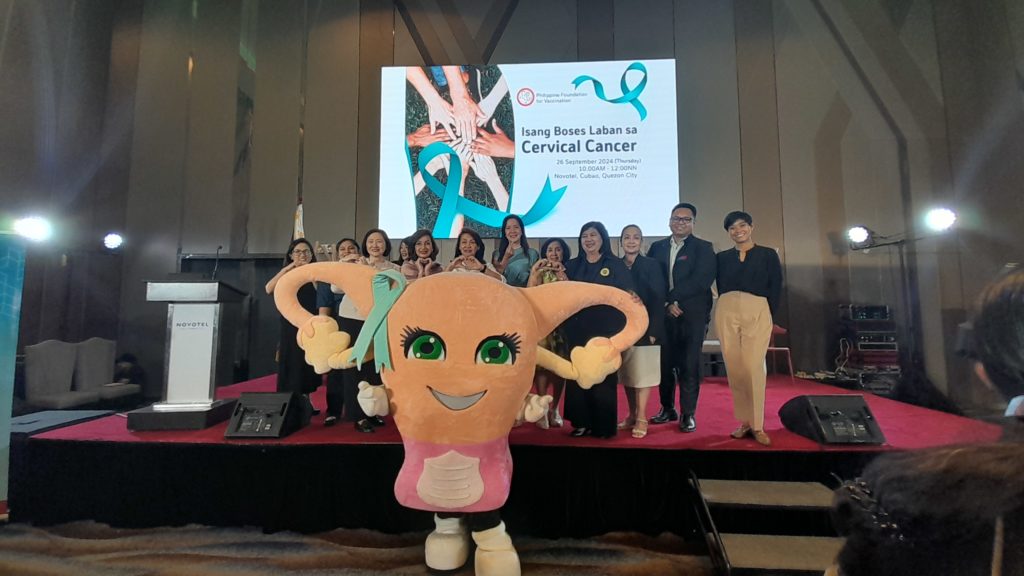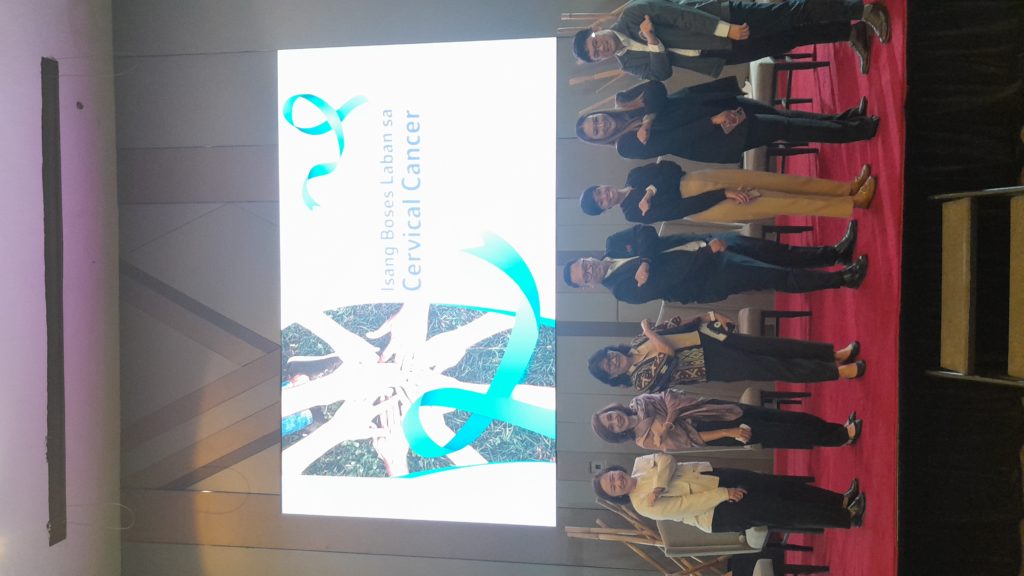The Philippine Foundation for Vaccination (PFV) recently hosted a media forum titled “Isang Boses Laban Sa Cervical Cancer,” in Novotel Manila, bringing together key medical societies, organizations, and government agencies to discuss the urgent need to eliminate cervical cancer in the Philippines. The forum highlighted a united front among various sectors, all committed to accelerating efforts toward this goal.

The event brought together key medical societies and organizations, including the Philippine Medical Association (PMA), Pediatric Infectious Disease Society of the Philippines (PIDSP), Philippine Infectious Disease Society of Obstetrics and Gynecology (PIDSOG), Philippine Society for Microbiology and Infectious Diseases (PSMID), among others; Johns Hopkins Program for International Education in Gynecology and Obstetrics (JHPIEGO); government agencies such as the Department of Health (DOH), and Department of Education (DepEd); and Quezon City District 1 Councilor Charm Ferrer, in a collective commitment to advancing HPV vaccination, screening, and treatment to eliminate cervical cancer by 2064.
Burden of cervical cancer and strategies for elimination
Human papillomavirus (HPV) is the primary cause of cervical cancer, which claims the lives of 12 Filipinas every day. Nearly all cases of cervical cancer are linked to HPV, yet this disease is largely preventable through vaccination. The HPV vaccine significantly reduces the risk of infection, offering a critical opportunity to save thousands of lives by preventing cervical cancer and related diseases.
In response to this public health challenge, the World Health Organization (WHO) launched the Global Strategy to Accelerate the Elimination of Cervical Cancer in 2020, setting ambitious targets for 2030: 90% of girls fully vaccinated with the HPV vaccine by age 15, 70% of women screened by ages 35 and 45, and 90% of women with cervical disease receiving appropriate treatment.
Australia and Indonesia are leading the charge in cervical cancer elimination through their ramped-up HPV vaccination programs. Australia, which launched the world’s first publicly funded national HPV vaccination program in 2007, has coupled it with a comprehensive National Cervical Screening Program that has been in place since 1991. By vaccinating both girls and boys aged 12-23 and introducing a twice- in-a-lifetime screening, Australia is on track to eliminate cervical cancer by 2038.
Indonesia has recently committed to a National Cervical Cancer Elimination Plan (2023-2030) that aligns with WHO’s 90-70-90 targets, adapting them to local needs and resources. This plan emphasizes a multisectoral approach, involving stakeholders from academia, industry, healthcare, religious groups, and the media to drive success.
In contrast to Australia and Indonesia’s robust efforts, the Philippines faces significant challenges in cervical cancer prevention, with only 33% HPV vaccine coverage for girls and a screening rate of less than 1% for women. This disparity underscores the need for stronger initiatives in the Philippines to improve both HPV vaccination rates and access to cervical cancer screening. If the country fully implements these elimination pillars, cervical cancer could be eliminated by 2064, potentially preventing 970,000 deaths.

Integrating 9-Valent HPV vaccine into the national immunization program
A key focus of the forum is on the need to upgrade to the 9-valent HPV vaccine, which offers broader protection against emerging high-risk HPV genotypes, including HPV types 31, 45, 52, and 58. These types have become more prevalent in the Philippines. The 9-valent vaccine, already available in private healthcare settings since 2017, is a crucial component in the country’s cervical cancer prevention strategy. It is also pre-qualified by the WHO, ensuring its safety and effectiveness.
Studies from countries like Japan show that the 9-valent vaccine achieves earlier and more significant reductions in cervical cancer incidence compared to earlier vaccines. Thailand has also recently upgraded its national immunization program to include the 9-valent vaccine.
Medical societies will be presenting their unified stance on integrating the 9-valent HPV vaccine into the National Immunization Program to ensure comprehensive protection for Filipino girls.
Expanding access to HPV vaccination
With the country facing challenges in scaling up HPV vaccine coverage, the forum will highlight the urgent need to expand access points for vaccination. By increasing HPV vaccination availability in private schools and clinics, the Philippines can work towards achieving the WHO’s 90% vaccine coverage rate and bridge existing gaps in immunization.
Urgent call to eliminate cervical cancer
Cervical cancer and other HPV-related diseases are causing unnecessary loss of life, despite the availability of vaccines and effective screening. This fight can be won, but it requires swift and decisive action.
There is an urgent need to close the awareness gap and ensure that every Filipino-particularly young adolescents-has access to life-saving HPV vaccines. The tools are available, but a collective effort is required to reach those most in need.
Government agencies, healthcare professionals, and community leaders are being called upon to join this critical fight. Together, they can combat misinformation, increase vaccination rates, and work toward the eradication of cervical cancer in the Philippines.
The moment to act is now, as lives hang in the balance. By uniting, stakeholders can prevent unnecessary suffering, save thousands of lives, and pave the way for a healthier future for the nation.

